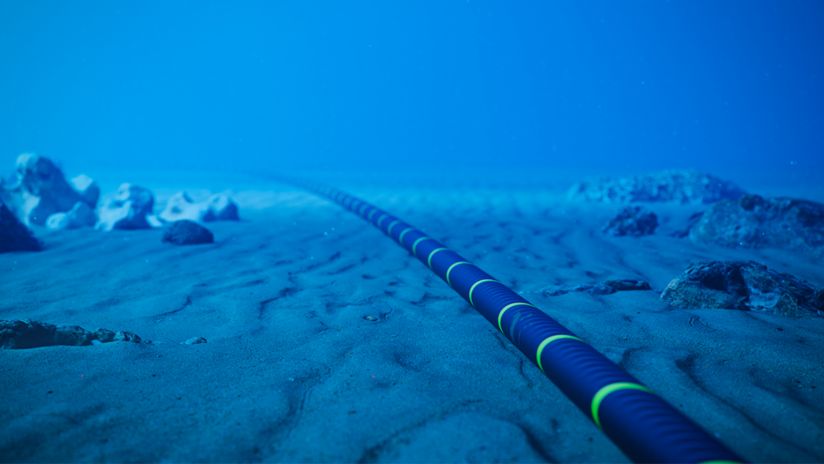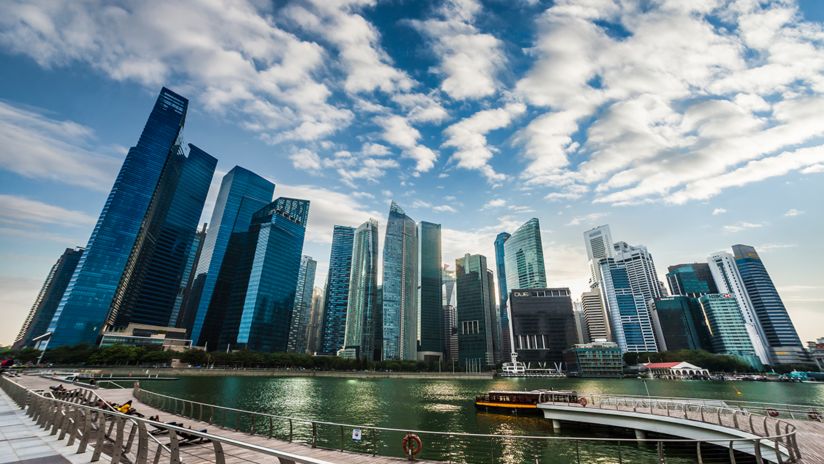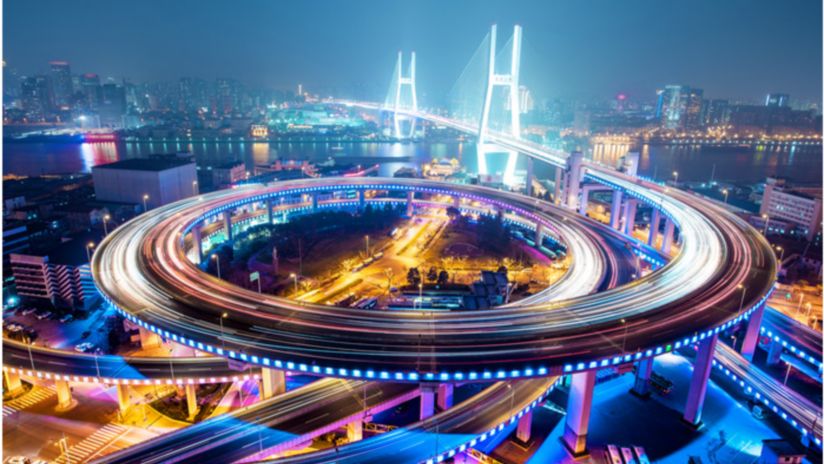New fibreoptic cables light the way for recycling at the bottom of the sea

They joked that it was “English weather” on the grey day in November 1984 that Australian telecoms’ finest gathered at the Sydney Opera House to hear Queen Elizabeth II officially launch the 16,000-kilometre ANZCAN submarine cable linking Australia with New Zealand and Canada, and on to the wider world. Like many of ANZCAN’s future users, the Queen beamed in live from London – signalling the arrival of analog communications at the then-unheard-of capacity of 1,380 live ‘voice circuits’.
Thirty-eight years later, in July 2022, ANZCAN’s latest successor, the SX NEXT cable (in which Telstra holds a 25% share), provided the first direct subsea link from Australia to the United States, elevating our communications speeds to a mind-boggling 72 terabytes per second – the equivalent of about 900 million voice circuits.
For Phil Murphy, who worked on the ANZCAN cable in 1984 as a 29-year-old “spring chicken” and now heads Telstra’s International Marine Networks, the arrival of SX NEXT was a moment of deep pride – not just for the phenomenal Internet speeds now available to Australian consumers, but for Telstra’s growing support for our Pacific neighbours.
“Everyone will feel the benefits, from the little tourism businesses sharing videos with their clients, to fishermen accessing real-time catch data, people staying in touch with relatives, all the lifesaving health and security benefits,” says Phil. “The whole of human nature is about communications, and this will help facilitate so many different aspects of communications we don’t even think about.”
When it comes to the Pacific Islands, the subject of climate change is never far from the conversation. More than 60 years after Telstra’s predecessor, the Overseas Telecommunications Commission (OTC), invested in our first trans-Pacific telephone cable, COMPAC, Telstra is committed to minimising the environmental impact of our expanding subsea network – which now encompasses some 400,000km of cables.
Many of these lie in shallower waters in the Indian Ocean and the South China Sea, where they go through a complex series of permits, right-of-way agreements and environmental approvals to ensure they don’t disturb any coral reefs, fish nurseries, or other sites of ecological importance.
But in deeper oceans like the Pacific, where subsea cables sit directly on the sea floor in dark and relatively risk-free depths of 5,000 metres or more, Telstra is part of a growing movement to pull up retired cables and recycle them for their valuable components – chiefly copper, steel, and polyethylene.
The case for reuse
In the 1990s, when most early Internet traffic was transmitted via satellite, the arrival of fibreoptic technology delivered a communications revolution – transporting digital signals at much larger capacities than traditional analog signals. Telstra’s ANZCAN cable was gradually turned down from 2001, as fibreoptic cable swiftly took over traffic across the Pacific.
Andy Lumsden, who leads Telstra’s international networks operations, spends much of his time negotiating cable permits with governments, keeping shipping operators informed of our cable routes, planning new routes with surveyors and conservationists – and repairing damaged cables. It can be arduous and bureaucratic work, but it can also be incredibly rewarding – like the recent retrieval of several hundred kilometres of subsea cable linking northern and southern Taiwan.
This cable ran along Taiwan’s east coast, an area renowned in marine circles for its devastating ‘turbidity currents’ – giant avalanches of mud and silt caused by earthquakes or runoff from tropical storms. These mudslides can snap subsea cables clean in half, and Telstra had been spending a lot of energy and resources repairing this particular cable route. So in 2017, it was decided to pull up the cable along with 14 repeaters – the optical amplifiers that boost fibreoptic signals – to reuse as spares on other Telstra cables.
“Pulling up that cable was a challenge,” admits Andy Lumsden. “First, we had delays from a live firing drill involving the navy, so our recovery ship had to move out of the area, and then, straight after that, a typhoon came in… But doing marine ops is like being a weatherman sometimes. You have to monitor the weather, seismic activity, shipping, fishing – you name it!”
“Rather than a ‘groundhog day’ of continuing repairs, we replaced the Taiwanese cable with a terrestrial connection and freed up the cable and repeaters to use elsewhere,” adds Phil. “It’s a constant balancing act – but this was a great example of a clearly worthwhile cost-risk benefit.”
Deep-sea preservation
The successful Taiwanese project shows the phenomenal potential of salvaging cables – not only in reusing raw materials and slashing repair bills, but in removing liabilities and permit fees, freeing up subsea routes, and, of course, providing tonnes of valuable raw materials that are usually still in pristine condition after years on the sea floor.
Studies by the International Cable Protection Committee (ICPC) – a group of 170 cable operators and manufacturers which advises governments on best practice – show that subsea cables have a relatively benign impact on the environment. Cables recovered in the mid-Pacific and the North Atlantic after more than 40 years show virtually no damage to the core copper and steel or the plastic sheath – and no discernible impact on their surroundings. In fact, some old analog cables have even been repurposed as artificial reefs in the US, where they’ve quickly been colonised by starfish, mussels and other sealife.
Telstra is a long-term member of the ICPC as well as the SubOptic Association, which runs conferences and promotes best practices in the global cable industry. Since the 1980s, the company has worked closely with governments across the Asia-Pacific, as well as conservation groups, ships’ operators, and fishing unions in places like Japan and Taiwan, to ensure we are working in everyone’s best interests to optimise our networks – while protecting some of the most precious marine ecosystems in the world.
It can be an uphill struggle. Recent years have seen several complicating factors, such as the explosion of deep-sea fishing and ocean platforms (known as fish aggregation devices), not to mention political developments that have seen fewer cables landing in China or Hong Kong. But according to Phil Murphy, the cable industry is generally a harmonious one, and major investments by ‘Big Tech’ companies like Google and Facebook have led to new opportunities for countries like Taiwan, Indonesia and the Philippines to grow their prominence as international data hubs.
“If you talk to Siri today, your question is resolved in a Taiwanese data centre and travels back to Australia under the sea.” – Andy Lumsden, Head of Global Network Services, Telstra International
The kind of collaboration Phil refers to was on prominent display back in January, when a huge subsea volcano severed the only international cable to the Pacific nation of Tonga – cutting the country off from the Internet and seriously hampering relief efforts. But it was not only governments that came to Tonga’s rescue. While neighbouring countries rushed to provide emergency supplies, members of the South Pacific Marine Maintenance Agreement – through which 25 cable operators share a repair ship – quickly pooled spares to restore its cable, while Telstra also provided back-up satellite capacity. “It was a great example of the cooperative spirit that generally characterises this industry,” says Phil.
A new chapter in recycling
The recovery of the ANZCAN cable marks a new chapter in subsea conservation for Telstra. Over the coming months, the company will contract a number of specialist cable-recovery vessels to pull up the original cable laid in 1984 – an operation that will involve an estimated eight ships transcribing the 16,000km route between Sydney and Vancouver, using giant grapnels to lift the cable from the sea floor. The cable will then be returned to shore and stripped to its individual components – copper wire, high-strength stranded steel, and polyethylene casing – which will be sold to major recyclers. Repeaters will also be cut out for safe disposal.
The stranded steel will be unwound and, in all likelihood, gain a second life in fencing. The high-density polyethylene will be melted into pellets and reused to manufacture anything from tables and chairs to drink bottles and even clothing. The copper, being 99.9% proof, will gain a new life through global commodity markets.
“It’s amazing to think that these materials that were once five or six kilometres down at the bottom of the Pacific will soon be part of a farm fence or a button on a coat,” says Phil.
Other projects are already in progress to recover significant sections of cables that OTC part-owned, including Pacific cables HAW4, TPC2 and TPC3, which once linked Australia’s east coast via the US territory of Guam. And in the next few months, negotiations are planned to recover and recycle several of OTC’s majority-owned cables – including COMPAC, the predecessor of ANZCAN, which dates back to the 1960s; the SEACOM cable between Cairns and Hong Kong; and the AIS cable linking Perth
with Jakarta and Singapore.
Over the past year, Telstra has been busy tracking down the 22 parties that originally owned smaller shares in the ANZCAN cable, to secure the permissions necessary to pull up this huge cable for recycling.
“This is the first time that we’re running the recovery process as the principal operator,” explains Phil Murphy. “And it’s also the first time that it’s happening with a cable that makes landfall in Australia. So it’s a new line of business for Telstra – and a new chapter in recycling, which makes me proud once again!”
Additional reading:
Keeping Australia connected to the world
More about SX NEXT:
Telstra’s 27th cable system, SX NEXT is among the largest single submarine cable infrastructure projects in the world. The system spans 15,857km between Australia, New Zealand and the United States, with branching units to Fiji, Kiribati and Tokelau. Telstra is a 25% shareholder in the Southern Cross Cables Network, together with Singtel-Optus, Spark NZ and Verizon. For more information, see how Telstra boosts connectivity between Australia and the world with Southern Cross NEXT subsea cable.


